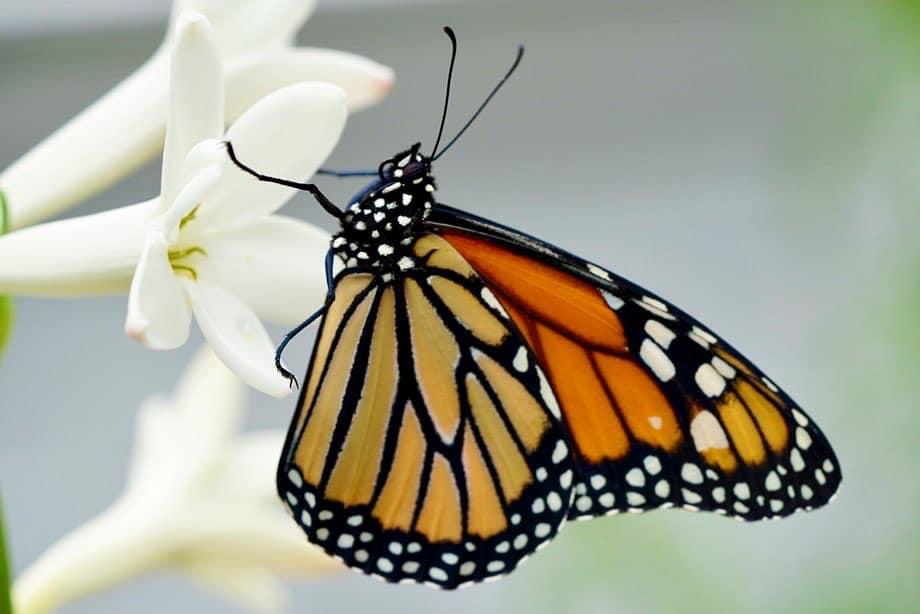
photo by Beth Weiler
Arguably our most beloved summer insect, the migratory Monarch butterfly (Danaus plexippus plexippus) is now an Endangered species: that’s according to the International Union for Conservation of Nature (IUCN), who maintains a Red List of Threatened Species based on the best available data. The striking migratory Monarch is well known for its extraordinary annual migration from overwintering grounds in Mexico and California to summer breeding habitat throughout the U.S. and Canada. Their extraordinary multi-generational migration is an incredible feat: adult Monarchs average just half a gram and must fly hundreds, even thousands, of miles on fragile wings, powered only by sugary nectar.
Habitat loss is the primary threat to Monarchs: clearing their overwintering grounds for agriculture and urban development has left far less shelter for overwintering butterflies. Pesticides and herbicides used in industrial agriculture also claim the lives of Monarchs and their milkweed hosts. Although Monarch populations have fluctuated quite a bit in the past – last year, for example, was a bumper year for Western Monarchs, with many more individuals than usual recorded – the increasing trend of their threats makes it clear that they are at risk.
At the local level, the most impactful things you can do to help Monarchs are:
- Plant native milkweed to provide forage and egg-laying habitat. Check out this excellent resource from MSU explaining how to acquire and grow milkweed.
- Decrease (or eliminate) pesticide and herbicide use in your yard or garden.
- Report your Monarch sightings to www.journeynorth.org
These three actions will make a difference for your local Monarchs and give them the best chance to continue gracing your garden for years to come.
-by Beth Weiler


